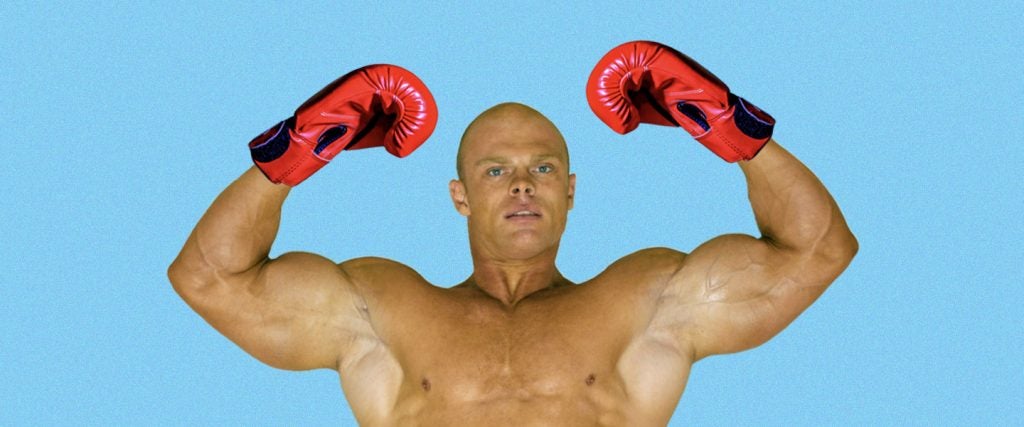“Fighting is the best workout in the world. There’s nothing else like it,” Rudy, a fellow Bally Total Fitness trainer, used to admonish me. “You should think about it. I know you like all the Rocky movies, but there’s nothing like the adrenaline of a real fight. It saps the endurance out of you so fast. Sparring with someone for real is like no workout you’ve ever had in your life!”
It was hard to argue with him. If you comb through the archives of boxing photos, one thing will quickly leap out at you: Most world-class fighters have muscle definition that rivals that of full-blown physique competitors. Case in point: You could have determined the winner of every “Sugar” Ray Leonard/Thomas “The Hitman” Hearns fight based solely on whose body more closely resembled that of Bruce Lee in his prime.

Does boxing actually build the muscles that adorn fighters’ bodies?
In and of itself? No.
Okay, I’ll soften that a little because proper execution of the sweet science mandates serious foot movement and a lot of bouncing. If you hop around like Muhammad Ali for several rounds at a time, you could theoretically build a small quantity of muscle in your calves, but it wouldn’t be all that impressive. Meanwhile, if you’re sparring, and you find yourself constantly in the clinch and repeatedly shoving another living, breathing human being away from you, that’s at least an upper-body maneuver that’s being performed against significant resistance. But again, I wouldn’t bank on it providing a beach-worthy physique.
In fairness, though, I feel like what you’re really asking me is whether or not the mere act of punching by itself is going to build muscle. Well, irrespective of the type of muscle-training method you’re employing — whether it’s the concentric or eccentric phase of a lift, an isometric hold or a force-generating ballistic or plyometric movement — there’s always a clear form of resistance being applied to the muscle that’s generating tension and causing the sort of fiber tearing that builds muscle mass. In the case of an ordinary punch, however, the only resistance being administered is provided by the empty air, which is the very essence of facing no resistance.
So why are boxers always so jacked then?
Because of everything fighters do to fortify their bodies for the sake of making their midsections more durable and making their punches more punishing. In the modern era, even boxers fighting in weight classes well below 150 pounds are now expected to engage in a full battery of resistance-training exercises using both their bodyweight and external forms of resistance to add strength to all parts of their body.
Mike Tyson, who famously didn’t train with weights except to do shoulder shrugs prior to his 1992 imprisonment, performed 500 push-ups, 1,000 sit-ups, 1,000 bodyweight squats, 500 weighted shrugs and 500 bench dips every single day, along with 10 additional minutes of neck-strengthening exercises. Clearly, Tyson spent hours developing immaculate fighting form as well, while also optimizing his conditioning by jogging for three miles every morning, and sparring for 16 rounds each day. These efforts notwithstanding, all of that size was amassed through the many excruciating hours Tyson spent strengthening his muscles against real resistance.
If you want to box because it will help you get into better shape, the simple act of shuffling and shadowboxing will undoubtedly torch some calories. But if your ultimate goal is to build the sort of muscles that are capable of shattering Little Mac’s dreams, you’re going to have to train against resistance that’s a little bit stiffer than thin air.

